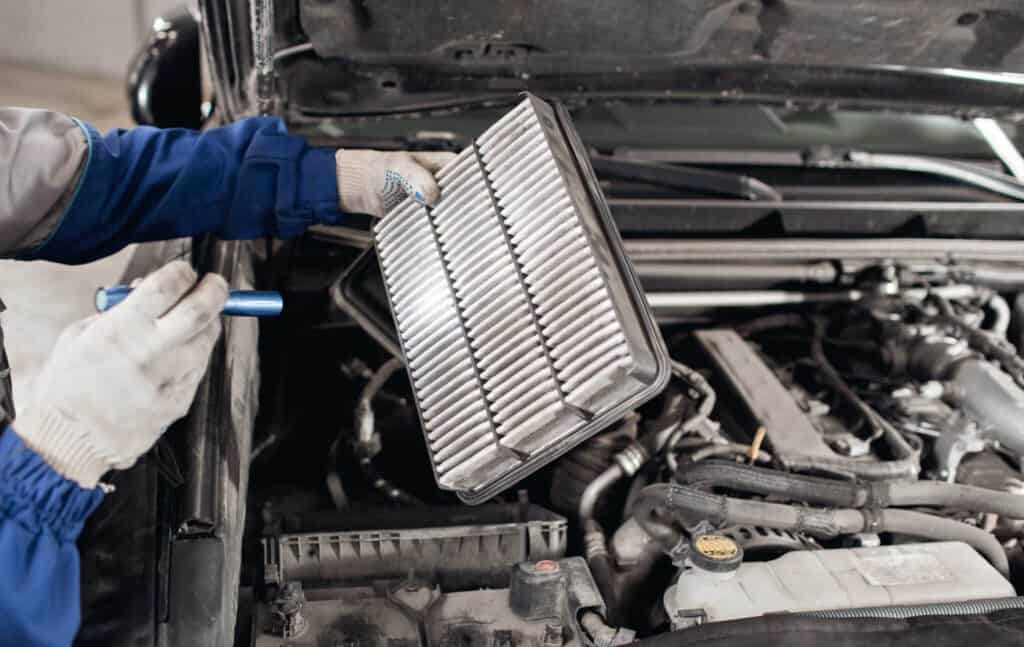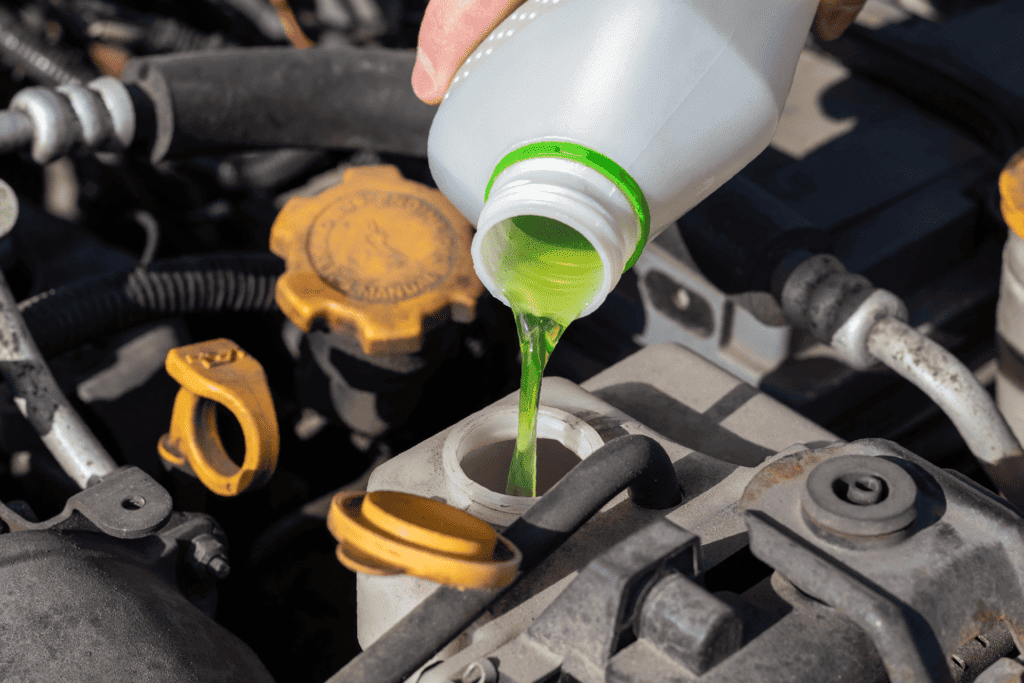Introduction: Crucial Insights Your Mechanic Wants You to Know About Radiator Maintenance
Who doesn’t cherish that purring sound of a contented engine, effortlessly cruising down the highway? We take it for granted, enjoying the music, the conversations, or the simple pleasure of the open road. But beneath the hood, a constant battle rages on. Heat, the natural byproduct of engine combustion, can be a formidable enemy. If not kept in check, it can transform our enjoyable ride into a vehicular nightmare. The radiator, a marvel of automotive engineering, steps up as the guardian of the engine, ensuring those high temperatures are tamed and managed. It’s the silent sentinel that works tirelessly, making sure every trip you take is free from unexpected overheating surprises.
Radiator Mysteries Unraveled
In the vast orchestra that is a car’s internal system, if the engine is the lead vocalist, the radiator is the conductor, ensuring harmony and balance. But what exactly does it do? Its primary role is to keep the engine cool and functioning optimally. As the engine burns fuel, it produces heat. A lot of it. Left unchecked, this heat could spell disaster for the engine components, leading to malfunctions, breakdowns, or even irreversible damage.
The radiator, positioned strategically at the vehicle’s front, gets the first hit of the external air as you drive. This air, combined with the coolant that circulates through the radiator’s intricate network of tubes and fins, absorbs and dissipates the engine’s excessive heat. It’s a bit like how sweating helps regulate our body temperature during rigorous physical activity.
Furthermore, the radiator ensures that the engine operates within a specific temperature range. Too cold, and the engine doesn’t function efficiently. Too hot, and well, you’re looking at potential engine damage. The radiator strikes that delicate balance, ensuring temperatures stay just right. In essence, it’s not just about combating overheating; it’s about maintaining the perfect environment for the engine to deliver its peak performance. And in this constant dance of heat regulation, every component, from the coolant to the radiator cap, plays a pivotal role.

Beyond Coolant: Unpacking the Radiator’s Multifaceted Job
Heat Dispersion
• Efficient Dissipation: While the engine produces vast amounts of heat, the radiator ensures that this heat is efficiently dispersed, preventing potential overheating.
• Airflow Regulation: By being positioned at the front, it capitalizes on the incoming air to aid in cooling.
• Coolant Circulation: It isn’t just about holding the coolant but effectively circulating it to absorb and transfer engine heat.
Temperature Regulation
• Optimal Operating Range: The radiator ensures that the engine remains within a specific temperature bracket, ideal for performance.
• Protection Against Extremes: While overheating is a concern, the radiator also prevents the engine from getting too cold, which can hamper its efficiency.
• Collaboration with Thermostat: Works in tandem with the engine’s thermostat to regulate coolant flow based on the engine’s current temperature.
Spotting Trouble: Early Warning Signs to Never Ignore
Unexpected Overheating
• Spikes in Temperature: Sudden increases in your dashboard’s temperature gauge, especially during normal drives.
• Steam from Under the Hood: This is a clear sign of overheating, indicating that the radiator isn’t cooling the engine effectively.
Puddles or Spots Under Your Car
• Color Indicators: Coolant leaks can range in color but are usually green, orange, or pink.
• Location Clues: Leaks directly under the engine area can often be traced back to the radiator or its hoses.
Unusual Coolant Levels
• Frequent Top-Ups: If you find yourself frequently adding coolant, it’s a red flag.
• Discoloration in Coolant Reservoir: The presence of particles or a sludgy appearance can indicate a compromised cooling system.
A Malfunctioning Temperature Gauge
• Erratic Readings: If the gauge is giving fluctuating readings or reading too high too soon after starting, there could be radiator issues.
• Stuck Gauge: A gauge that doesn’t move, or moves very little, might be indicating a problem with the coolant not circulating effectively.
DIY Dos and Don’ts: Everyday Radiator Care Tips
• Inspect that Radiator Cap: A compromised seal can lead to inefficient cooling due to lost pressure. Check the cap for any visible wear, cracks, or buildup. Ensure the cap has the right pressure rating for your vehicle, typically indicated on the cap or in the vehicle’s manual.
• Consistent Coolant Checks: Aim to check the coolant level at least once a month. Ensure the coolant reaches the “full” mark on the reservoir. Too low can cause overheating; too high can lead to leaks. Coolant should be free from debris and maintain its original color (often green, pink, or orange). Cloudiness or particles suggest a problem.
Periodic System Flush
• Why It’s Essential: Over time, old coolant can become acidic, leading to corrosion and potential damage.
• Frequency: Every 30,000 to 40,000 km, or as recommended in your vehicle’s manual.
• After-Flush Care: Always refill with a mix of coolant and distilled water in the ratio recommended for your vehicle.
The Cascade Effect: How Neglected Radiators Impact Your Entire Vehicle
An often-overlooked component, the radiator’s health impacts more than just keeping temperatures in check. Think of the radiator as the diligent security guard of your engine’s fortress. When it’s compromised, the entire citadel is at risk.
• Overheating: The most immediate threat from a poorly-maintained radiator is overheating. Imagine running a marathon in thick winter wear. That’s what driving with an inefficient radiator feels like for your engine. Over time, this stress can cause irreversible engine damage. Gaskets can fail, engine blocks can crack, and the entire heart of your vehicle can become jeopardized.
• Decreased Fuel Efficiency: An engine that’s constantly hot needs to work harder. This extra effort isn’t free. It demands more fuel, leading to frequent stops at the gas station. Over an extended period, the efficiency loss can be substantial, both in terms of fuel expenses and the environmental footprint.
• Transmission Troubles: Modern vehicles often have the transmission cooler integrated within the radiator. When the radiator falters, the transmission doesn’t receive the cooling it needs. Elevated temperatures can lead to transmission fluid breakdown and potential transmission failure. A double whammy, given that transmission repairs can be as costly, if not more so, than engine fixes.

Demystifying Common Misconceptions: Busting Radiator Myths
Let’s set the record straight on some of the most pervasive radiator myths out there. While the myths seem intuitive to many, the reality is a bit more nuanced.
• Any Liquid Works: It’s tempting to think that in a pinch, any liquid can do the job. After all, the primary purpose of coolant is to cool, right? Not so fast. Engine coolants are specifically designed mixtures that do more than just lower temperatures. They prevent corrosion, lubricate components, and resist freezing in cold climates. Substituting with water or other liquids can lead to rust buildup, diminished cooling efficiency, and potential freezing in colder months.
• Tiny Leaks, Minor Problems: The allure of this myth is in its deceptive simplicity: “It’s just a tiny leak; how bad can it be?” Quite bad, actually. Think of a small leak as the first domino in a long chain. Over time, that minor loss can lead to lowered pressure in the system, decreased cooling efficiency, and eventually, the dreaded overheating. Plus, where there’s one leak, there may be more, signaling potential corrosion or material failure within the radiator. It’s always better to address these “minor” problems head-on before they snowball into major, wallet-draining repairs.
Mechanic’s Corner: Essential Professional Maintenance Routines
There are moments when a professional touch makes all the difference:
• Radiator Pressure Tests: This test ensures the radiator can hold pressure, crucial for optimal function. It can also reveal small leaks that might go unnoticed. Using specialized equipment, the system is pressurized, and the mechanic observes for any pressure drops.
• Intensive System Flushing: Deep Cleanse: Beyond a regular flush, this process clears out any sediment, rust, or scale deposits and ensures maximum efficiency by allowing the coolant to flow unhindered.
Component Repairs
• Intricate Parts: Radiators comprise various components, from hoses to fans, each playing a critical role.
Common Repairs: Replacing damaged hoses, fixing broken fans, or addressing faulty thermostats.
• Leave It to Pros: Given the intricacy, some repairs are best left to seasoned mechanics to prevent further damage or complications.
Arming Yourself with Knowledge for the Road Ahead
Knowledge is power, and in the realm of vehicle maintenance, it’s the fuel that drives informed decisions. As you take on the road, remember that behind every smooth ride is a well-maintained radiator. And when things seem a bit steamy under the hood, don’t hesitate to consult professionals. After all, with experts like Uchanics a call away, why take a chance? Cruise confidently, knowing you’re equipped with the right insights. Safe journeys!
